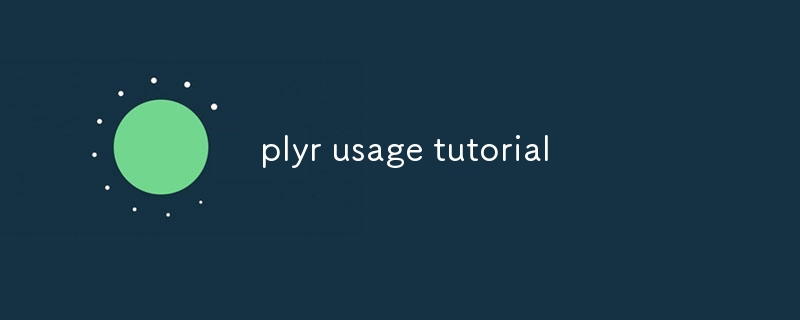Home >Common Problem >plyr usage tutorial
plyr usage tutorial
- DDDOriginal
- 2024-08-15 14:58:171214browse
The plyr package, providing functions for splitting, applying, combining, and summarizing data, offers concise data manipulation capabilities. Key functions include split to divide data by variables, lapply to apply a function to a list, and apply to

How to manipulate data in R using the plyr package?
The plyr package provides a suite of functions for data manipulation in R. It offers a consistent and concise syntax for common data manipulation tasks, making it easier to work with large and complex datasets. The plyr package includes functions for splitting, applying, combining, and summarizing data.
What are the key functions of the plyr package and how to use them?
- split(): Splits a data frame into a list of data frames based on one or more grouping variables.
- lapply(): Applies a function to each element of a list and returns a list of the results.
- apply(): Applies a function to rows or columns of a data frame and returns a vector or matrix of the results.
- ddply(): Combines split() and lapply() to apply a function to each group of a data frame and return a summary or new data frame.
How to create summary statistics and perform data transformations with plyr?
- summarize(): Creates a summary table of statistics for each group of a data frame.
- transform(): Adds new columns to a data frame by applying a function to each row.
- mutate(): Similar to transform(), but overwrites existing columns rather than creating new ones.
How to use the plyr package for advanced data manipulation tasks?
The plyr package can be used for a wide range of advanced data manipulation tasks, including:
- Reshaping data from wide to long format and vice versa
- Aggregating data by multiple grouping variables
- Filtering data based on complex criteria
- Creating custom summary functions and data transformations
The above is the detailed content of plyr usage tutorial. For more information, please follow other related articles on the PHP Chinese website!

